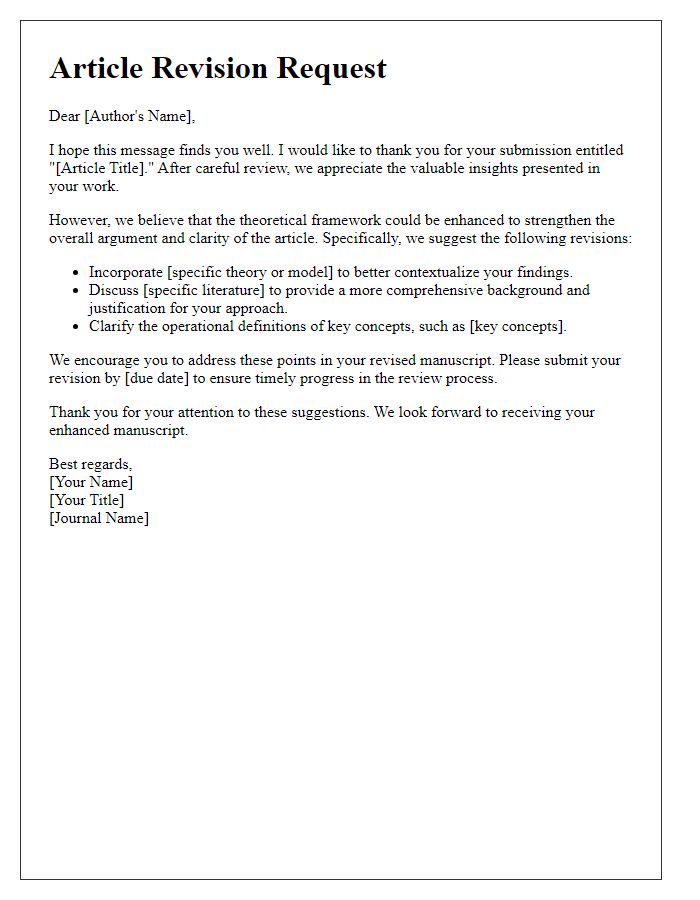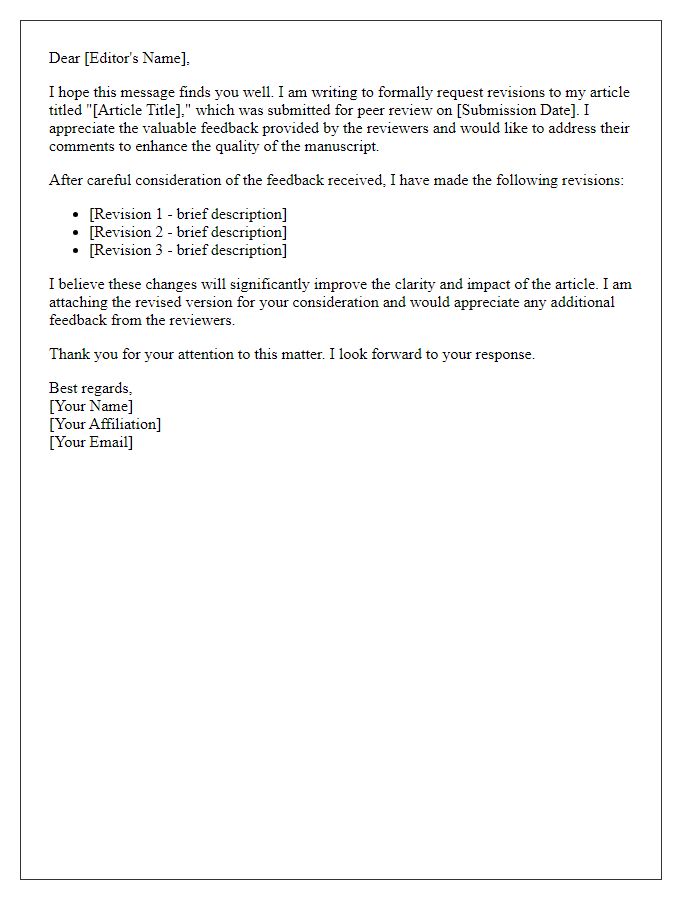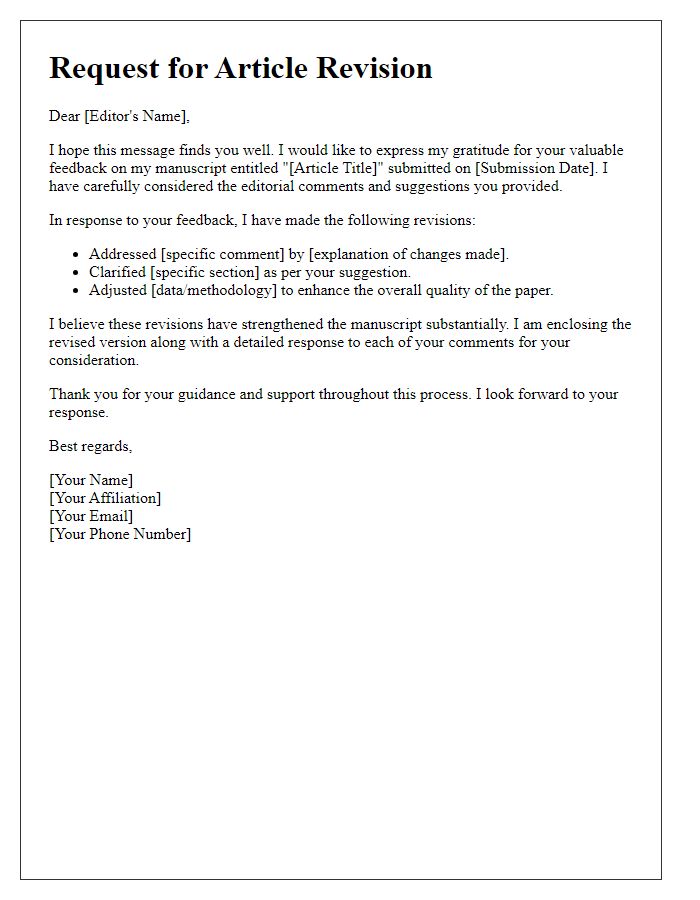Writing a letter to request revisions on an article can feel a bit daunting, but it's an essential part of the publishing process. Whether you're looking for clarity, enhanced arguments, or smoother transitions, approaching the author with a polite and constructive tone can make all the difference. Remember, collaboration is key in producing a top-notch piece that resonates with readers. Interested in learning how to frame your request effectively? Read on for tips that will inspire your next revision dialogue!

Clarity and Coherence
A comprehensive article revision request focuses on enhancing clarity and coherence in the manuscript. The primary aim involves identifying areas where the ideas may lack clarity, ensuring that the argument flows logically and seamlessly. Specific suggestions might include restructuring sentences for greater readability, simplifying complex language, and eliminating jargon that could confuse the reader. Additionally, enhancing cohesion between paragraphs through effective transitions will strengthen the overall narrative. It is crucial to maintain a consistent tone and style throughout while ensuring that the core message remains prominent and accessible. Engaging the reader requires a meticulous approach to detail, fostering a connection between the content and its intended audience. By prioritizing these aspects, the revision will significantly improve the impact and effectiveness of the article.
Adherence to Guidelines
Authors must ensure strict adherence to submission guidelines outlined by the journal. Guidelines detail formatting requirements (such as font size, line spacing, and referencing style), word count limitations (generally ranging from 3,000 to 5,000 words for original research articles), and the necessity of including specific sections like abstract, introduction, methodology, results, and discussion. Additionally, supplemental materials (figures, tables, and appendices) should be labeled correctly and cited within the text. Failure to comply can lead to delays in the review process or potential rejection. Therefore, meticulous attention to these guidelines enhances the likelihood of a successful publication in prestigious journals like the Journal of Medical Research or the International Journal of Environmental Science.
Relevance and Originality
An article's success heavily depends on its relevance and originality within its specific field. Relevance ensures that the content addresses current trends, significant research breakthroughs, or pressing societal issues, attracting readers' interest and maintaining academic rigor. For instance, articles focusing on recent advancements in renewable energy technologies or influential public health campaigns demonstrate timely engagement with contemporary topics. Originality, on the other hand, emphasizes unique insights, innovative methodologies, or novel arguments that distinguish the work from existing literature. Original ideas often emerge from analyses of datasets, case studies, or experimental results, contributing valuable knowledge and stimulating further discourse. A well-crafted article balances both elements, ensuring a meaningful impact within the scholarly community and beyond, reinforcing its authority and significance.
Accuracy and Evidence
The process of article revision plays a crucial role in enhancing the accuracy and reliability of scholarly work. Peer-reviewed articles published in reputable journals, like the Journal of Medical Research, often require meticulous evaluation against established standards of evidence. In the realm of scientific discourse, accuracy refers to the precise representation of data, findings, and methodologies outlined in the original study. Evidence, including statistical analyses, sample sizes, and contextual background, supports the author's claims and conclusions. Thorough revisions contribute to the validation of results, ensuring that the research adheres to ethical guidelines and maintains transparency throughout its presentation.
Language and Style
When requesting a revision of an article focused on language and style, it is essential to consider clarity and coherence. The revision should aim to enhance the overall readability and engagement of the text. Attention to sentence structure, vocabulary choice, and tone is crucial for creating an impactful written piece. Specific style guides, such as the Chicago Manual of Style or APA, may be referenced for formatting consistency. Additionally, addressing potential grammatical errors, punctuation misuse, and awkward phrasing can significantly improve the flow of the article. Ensuring alignment with the target audience's expectations and preferences will also enhance the article's effectiveness. Overall, the revision process should prioritize not only the correctness of language but also the artistic quality of the writing.
Letter Template For Article Revision Request Samples
Letter template of article revision request for structural improvements.

Letter template of article revision request for additional data inclusion.

Letter template of article revision request for theoretical framework enhancement.











Comments